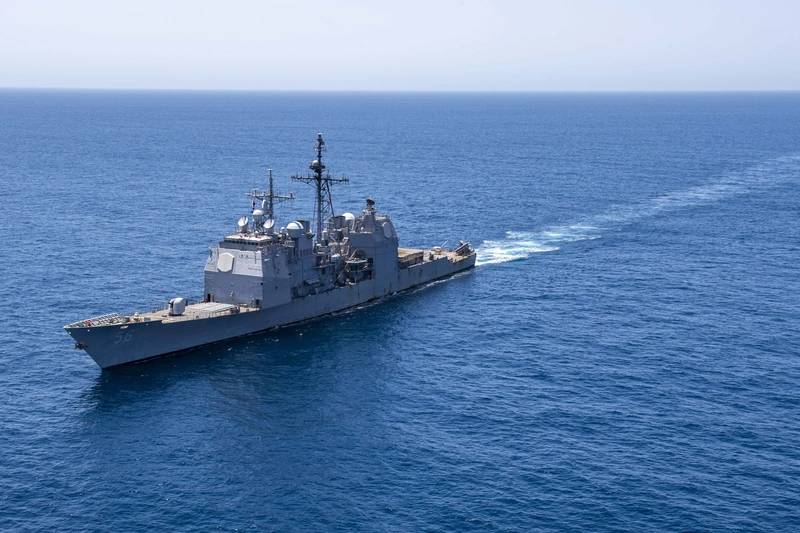US Navy Ships Set Record for Longest Stretch at Sea
Two warships kept away from shore to minimize crew exposure to COVID-19 have set a new U.S. Navy record for most consecutive days at sea.
As of Thursday, aircraft carrier USS Dwight D. Eisenhower (CVN 69) (Ike) and its escort ship, guided-missile cruiser USS San Jacinto (CG 56) have been at sea for 161 days, besting the previous mark of 160 days set by aircraft carrier USS Theodore Roosevelt (CVN 71) in February 2002.
Ike and San Jacinto departed their homeport of Norfolk, Va., in mid-January for the strike group’s Composite Training Unit Exercise (COMPTUEX) and follow-on deployment to the U.S. 6th and 5th Fleet areas of operation. At the time, the coronavirus was only just starting to emerge.
But by the time the ships crossed the Atlantic, the coronavirus had spread on land, and the U.S. Navy, grappling with COVID-19 outbreaks of its own aboard the Theodore Roosevelt and a number of other vessels, had begun curtailing port visits to limit the risk of crew exposure to the virus.
“In March, I suspended liberty port visits to reduce the chance of spreading and contracting the virus across the fleet,” said Vice Adm. Jim Malloy, commander U.S. Naval Forces Central Command, U.S. 5th Fleet, and Combined Maritime. “Throughout this pandemic, maintaining the fleet’s warfighting readiness while ensuring the safety and well-being of our sailors has been my top priority.”
Both Ike and San Jacinto’s crews have had to maintain mission readiness and effectiveness despite restrictions related to COVID-19.
“San Jacinto and Eisenhower have proven their ability to remain a flexible, adaptable and persistent force while staying on station in the Arabian Sea,” said Capt. Edward Crossman, commanding officer of San Jacinto. “Both crews have been resupplying and refueling, performing repairs and upkeep, and maintaining overall readiness while continuously at sea. The two ships have spent the last five months conducting operations and exercises with foreign partners, other U.S. service branches, and U.S Navy ships in the region.”
The ships also participated in a "rest and reset" period at sea, coming off-station for a short period of time to allow the crew to relax and reenergize with morale events such as swim calls and steel beach picnics.
But with every passing day at sea, the two warships will only continue to grow their record. Not due to return to the U.S. until later this year, Ike and San Jacinto’s remain deployed to the U.S. 5th Fleet area of operation in support of naval operations to ensure maritime stability and security in the Central Region, connecting the Mediterranean and Pacific through the Western Indian Ocean and three critical chokepoints for the free flow of global commerce.
“The fact of the matter is our work isn’t done,” Crossman said. “We aren’t headed home yet, and we’re on path to blow the previous record out of the water.”

Although Naval History and Heritage Command does not specifically track continuous days underway for naval vessels, it has two modern documented days-at-sea records, both of which are now broken.
In February 2002, USS Theodore Roosevelt operated for 160 days straight in support of post-9/11 response. And it was again, Ike, who held the record of 152 days consecutively underway during the Iran hostage crisis in 1980.
Interestingly, the first USS San Jacinto was also underway during a yellow fever epidemic during the Civil War. In May 1862, under the orders of President Lincoln, San Jacinto and other union warships bombarded Sewell’s Point, Va. In August 1862, it was reported that yellow fever had broken out on the ship, so San Jacinto sailed north, laid anchor and quarantined for four months.













